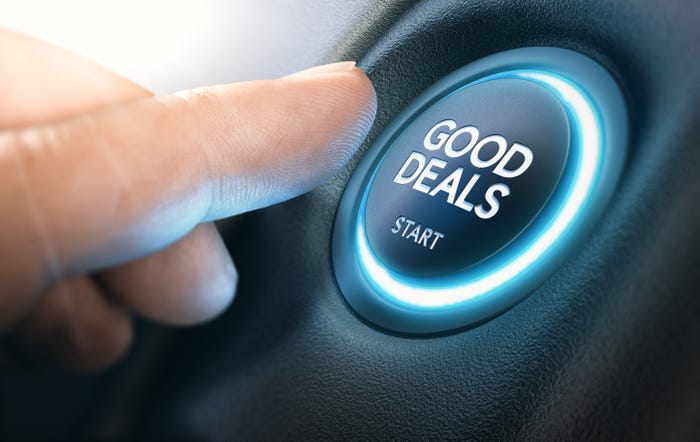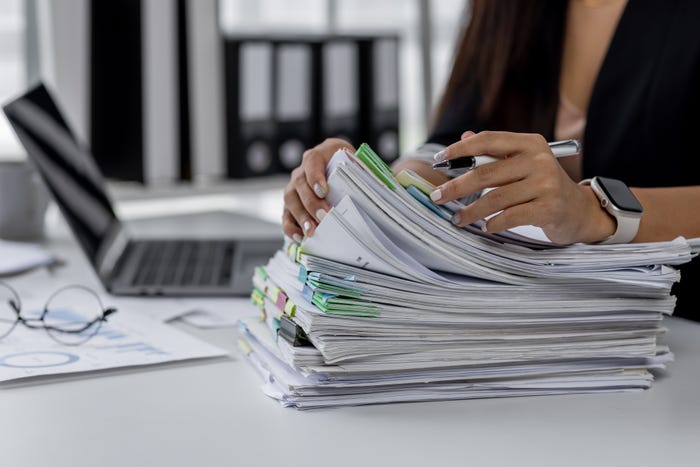Transportation Secretary Runs Down Talk of Higher Fuel Tax
Mary E. Peters calls the current tax “increasingly outdated, inefficient and unpopular.”


LIVONIA, MI – U.S. Department of Transportation Secretary Mary E. Peters says raising the federal fuel tax “makes zero sense” and that her organization must restructure to meet the challenges of an aging interstate highway system.
While record-high gasoline and diesel prices are prompting some politicians to support elimination of the gas tax, other lawmakers are lobbying to increase it to help improve the nation’s roads.
During last year’s debate over stricter corporate average fuel economy standards, several auto industry executives said a higher gas tax similar to what Europeans pay would shift the mix away from pickups and SUVs and toward smaller, more fuel-efficient passenger cars faster than additional regulations.
“If we had for the last 15 years a gradual rise in federal fuel taxation of $0.15 a gallon per year, that would gradually put the customer in the equation,” GM Vice Chairman Bob Lutz told journalists in January at the North American International Auto Show in Detroit.
“We could have over time, (and) without any federal fuel-economy regulation, used the market mechanism to gradually transition the American public into a vehicle mix that looks a lot more like Europe’s.”
Ford Motor Co. CEO Alan Mulally expressed similar sentiments at last summer’s annual Management Briefing Seminars in Traverse City, MI, shortly after U.S. Sen. John Dingell (D-MI) proposed an additional tax of $0.50 per gallon of gasoline.

Dept. Of Transportation Secretary Mary E. Peters
But Peters says pushing auto makers to build more fuel-efficient vehicles through stricter fuel-economy regulations without a hike in the gas tax is the best means to reduce consumption and tailpipe emissions.
“Together, we are accomplishing important national goals,” she says. “We are cutting our fuel consumption (plus) saving some 55 billion gallons (208 billion L) of fuel, and reducing tailpipe emissions, and saving American drivers over $100 billion in fuel costs over the lifetime of the cars and trucks covered by this new rule.
“Increasing dependence on gas taxes to fund infrastructure makes zero sense when Detroit and other auto makers are working so hard to make more fuel-efficient cars every year,” says Peters, who was appointed the department’s 15th secretary by President Bush in 2006.
“But leave it to Congress to get their signals crossed and call for greater fuel economy on the one hand while simultaneously calling for higher taxes on a product whose consumption we are trying to reduce,” she says.
As for eliminating the federal tax for the summer months, as presidential candidate Sen. Hillary Clinton (D-NY) suggests, Peters says on her blog Bush plans to remain neutral on the issue. The presumptive Republican nominee for president, Sen. John McCain (R-AZ), also supports temporarily lifting the tax.
Clinton says a tax on Big Oil’s profits would replace the federal tax and save each motorist $70 over the summer. Clinton’s rival, Barack Obama (D-IL) discounts the savings such a move would produce.
Peters reiterates during her address here that she welcomes debate over an “increasingly outdated, inefficient and unpopular” means of raising money to maintain the nation’s highways.
While admitting the federal gas tax provides her department the lion’s share of its $61.6 billion annual budget, she says the issue has become too politicized and is symbolic of a directionless organization.
“The coming reauthorization of our surface-transportation programs provides an historic opportunity to send those outdated approaches to transportation the same way as the Nash and the Edsel,” Peters says, noting the department oversees 108 programs administered by five agencies.
At the same time, traffic congestion in the U.S. has increased, bridges and roadways have aged and improvements that do get approved sometimes benefit the least needy.
“We can try to be all things to all people. But when we do so, as we’re doing today, it really belies any coherent national policy,” Peters says. “We risk being nothing to anyone if we don’t get our act together and focus on what is really important.”
Peters suggests the elimination of “earmarks and set-asides,” a caveat politicians include in legislation that sends money to a specific public program, and instead concentrating more on safety, an area where the department has made progress.
“Transportation safety will always be our No.1 goal, and we’ve made measurable progress,” she says.
In Michigan, for example, traffic fatalities have declined 25% over the last 10 years, and severe injuries have been cut in half, she says, citing safety improvements made by auto makers as “tremendously helpful.”
Peters says her daughter’s family was involved in a crash last week and although the vehicle was totaled all involved walked away uninjured.
“Good engineering on the vehicle, good engineering on the safety seats and a good mom for making sure everyone was using those things,” made the difference, Peters says.
She suggests better-leveraging data to further improve safety, including more aggressively attacking drunk driving and focusing on the growing number of crashes on rural highways, which tend to involve younger people.
Peters also would like to reform her department from an organization that simply hands out dollars to one that encourages technical innovation, eliminates red tape and inspires private money to invest in public-infrastructure improvements.
“If we shape our programs right, every public dollar we spend could bring three to four additional dollars to the table by states, localities and especially the private sector,” she says.
More than 20 public/private endeavors are under way in the U.S., Peters says. Last year, the department helped Virginia close a “creative transaction” to widen the Capitol Beltway. The project used private financing and state-of-the-art electronic tolls.
“There will not be a single toll booth created to manage the system,” she says, adding other states can tap into an estimated $400 billion in private funds by merely writing the necessary legislation.
“We can sit by and watch that private sector money get invested in China or Europe or South American or Australia, as it is too often today,” Peters says. “Or we can see those dollars invested here in the U.S. to improve our infrastructure. And it really is just that simple.
“In fact, we can use the revenue generated from private sources to unleash the greatest new wave in transportation investment that this country has ever seen, not just the latest, greatest gas-tax hike.”
Improving the nation’s transportation infrastructure is of particular importance to the auto industry, Peters adds, because poor roads make for a less enjoyable driving experience and threaten new-vehicle sales.
The DOT will unveil additional tweaks to sharpen its focus over the next few weeks, consisting of reform to “encourage a wise investment strategy and deliver a high level of performance,” she says.
“We no longer need you to squander precious hours stuck in commutes, or your business not being able to deliver just-in-time systems so you can keep your production lines moving.”
Read more about:
2008About the Author
You May Also Like





